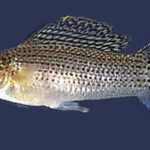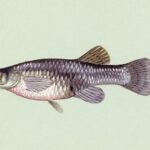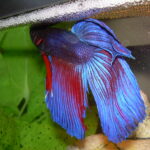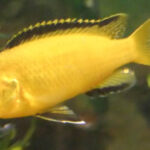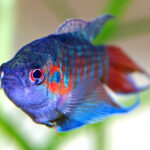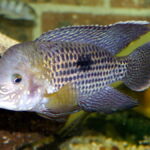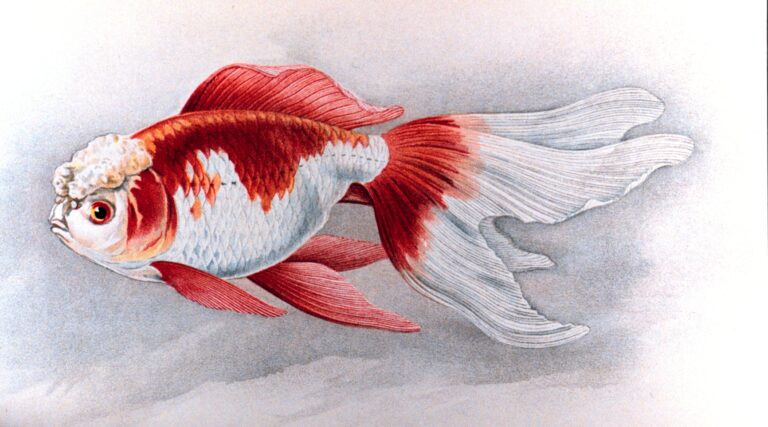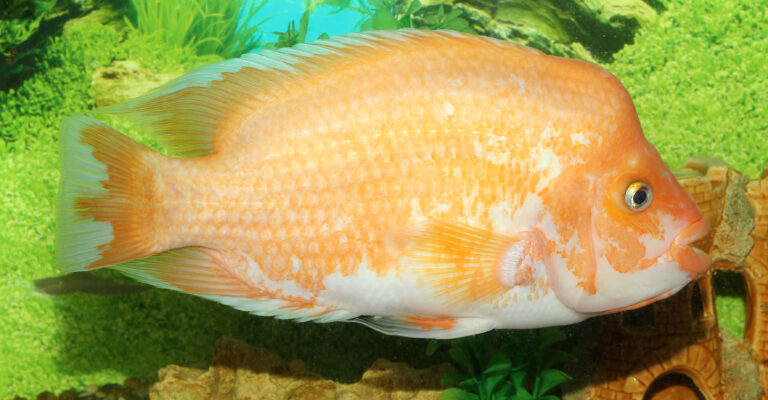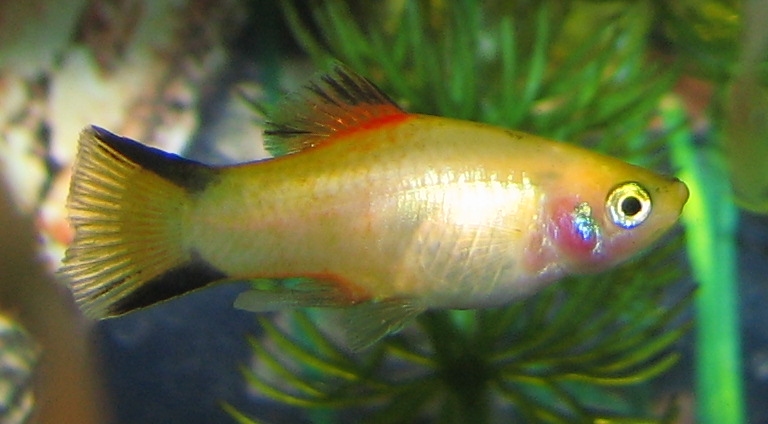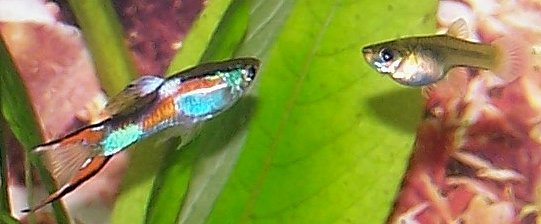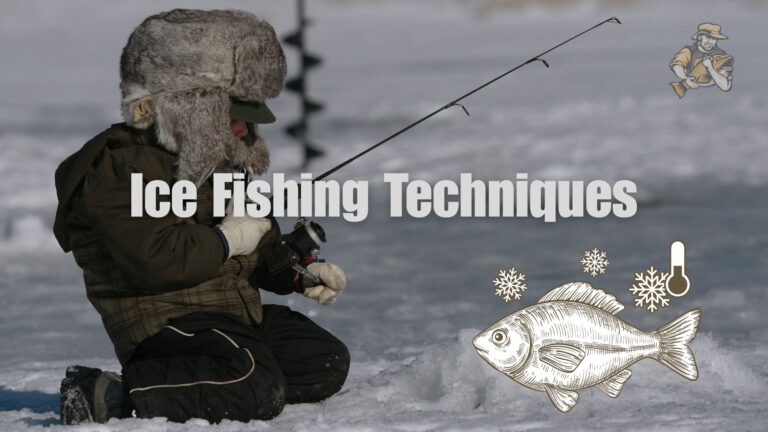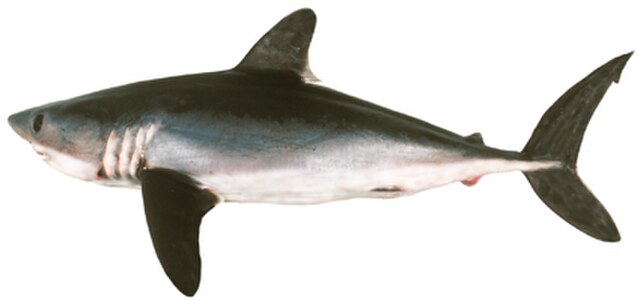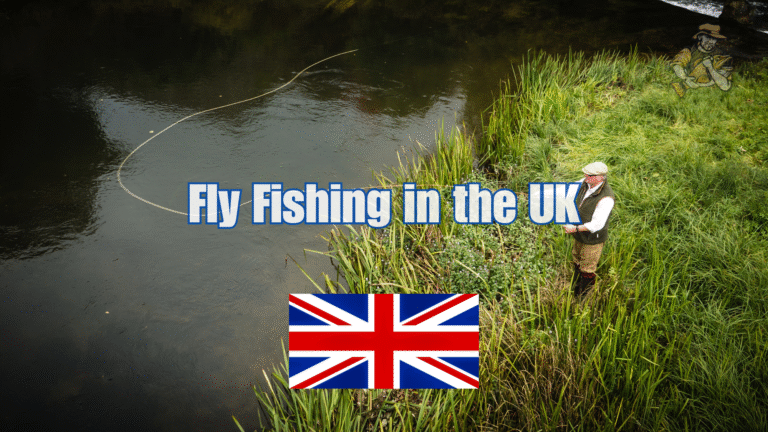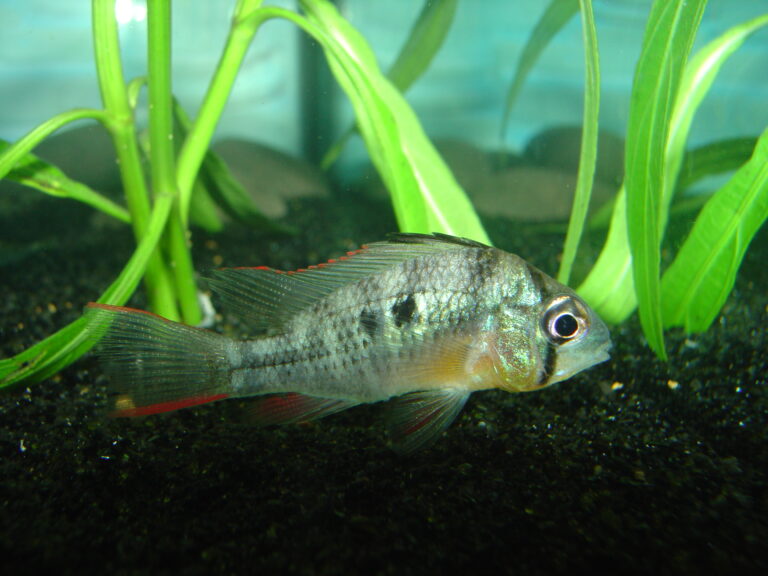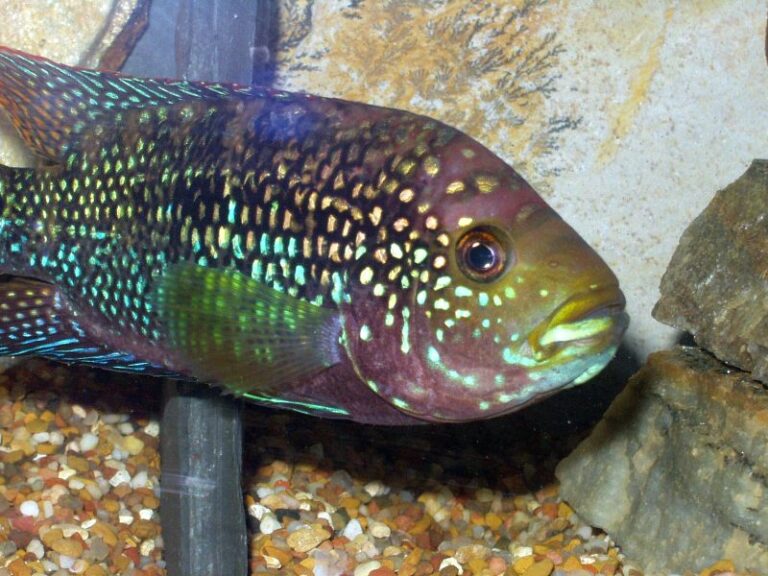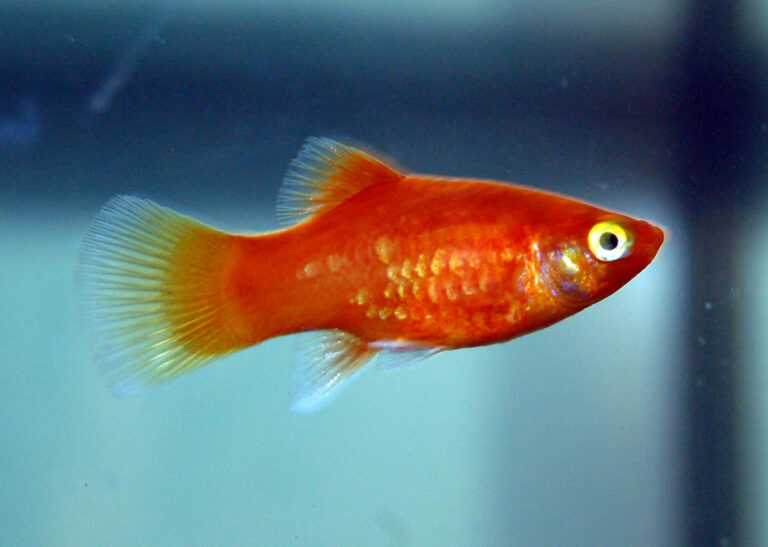Red Swordtail
By Ryan Maron | Last Modified: June 11, 2025
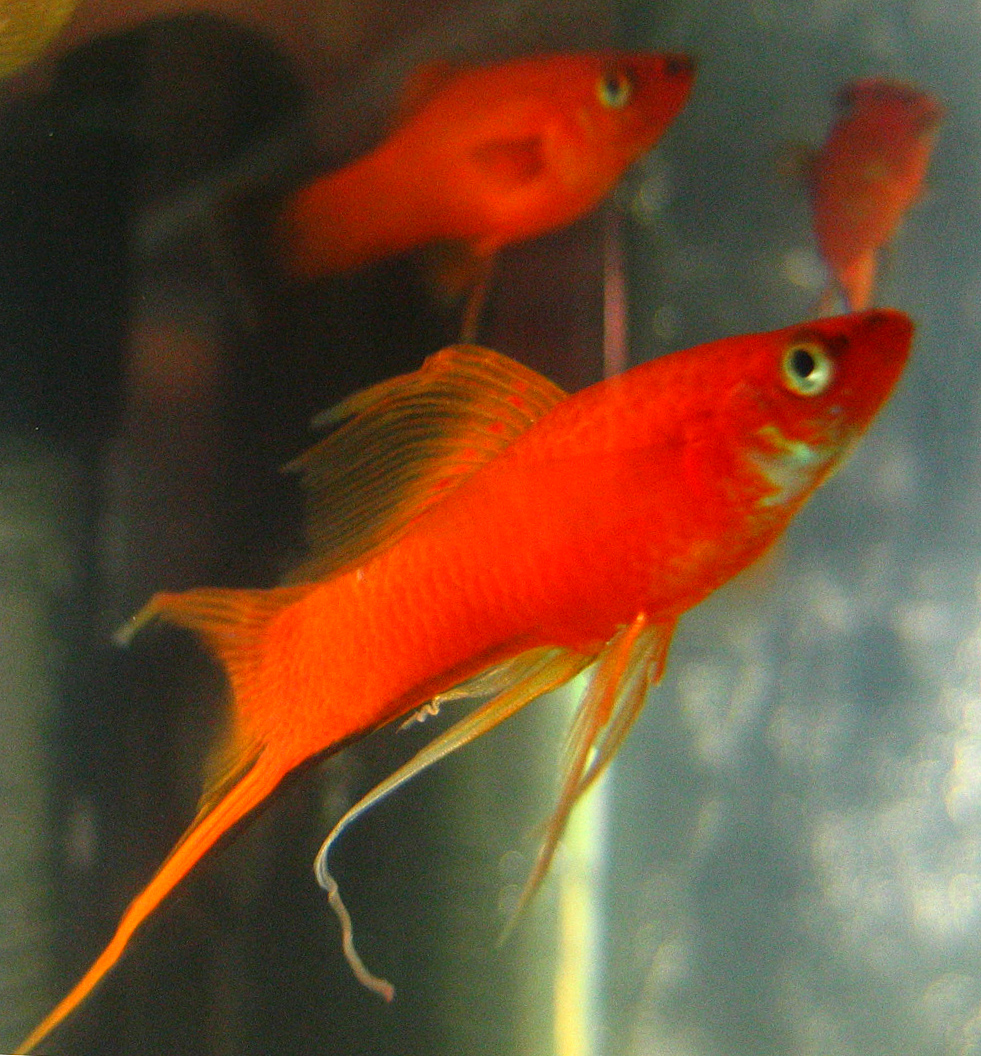
The Red Swordtail stands as one of the most recognizable and cherished freshwater aquarium fish in the world. Known scientifically as Xiphophorus hellerii, this vibrant member of the Poeciliidae family has captivated aquarists for over a century with its distinctive sword-like tail extension and remarkable adaptability. Native to the river systems of Central America, the Red Swordtail plays a crucial role in freshwater ecosystems as both a consumer of algae and small invertebrates and as prey for larger predatory fish. Its ecological significance extends beyond wild habitats, as breeding programs have produced numerous color variations that have shaped the modern aquarium trade. The species demonstrates exceptional resilience in diverse water conditions, making it an indicator species for ecosystem health in its native range while serving as an ideal introduction to livebearing fish for aquarium enthusiasts worldwide.
| Feature | Details |
|---|---|
| Common Name | Red Swordtail |
| Scientific Name | Xiphophorus hellerii |
| Family | Poeciliidae |
| Typical Size | 8-15 cm (3-6 inches), 15-35 grams |
| Habitat | Freshwater rivers and streams |
| Diet | Omnivorous – algae, insects, small crustaceans |
| Distribution | Central America, introduced worldwide |
| Conservation Status | Least Concern |
Taxonomy & Classification
The Red Swordtail belongs to the genus Xiphophorus within the family Poeciliidae, commonly known as livebearers. First described by Heckel in 1848, the species name “hellerii” honors Austrian naturalist Karl Bartholomäus Heller. The genus Xiphophorus derives from Greek words meaning “sword bearer,” directly referencing the elongated caudal fin extension that characterizes males of most species within this group.
Within the Poeciliidae family, Red Swordtails share close evolutionary relationships with platyfish (Xiphophorus maculatus) and other Central American livebearers. Molecular phylogenetic studies have revealed that the sword-bearing Xiphophorus species form a monophyletic group that diverged approximately 5 million years ago. The Red Swordtail represents one of 28 recognized species within the genus, though taxonomic debates continue regarding subspecies classifications and regional variants.
Selective breeding has produced numerous aquarium strains that differ significantly from wild-type specimens. These include various color morphs, fin variations, and body shapes that have been developed through decades of intensive breeding programs. Despite morphological diversity in captive populations, all aquarium strains maintain the fundamental genetic characteristics that define Xiphophorus hellerii as a distinct species.
Physical Description
The Red Swordtail exhibits pronounced sexual dimorphism, with males displaying the characteristic sword-like extension of the lower caudal fin ray that can measure up to 5 centimeters in length. Wild-type males typically reach 10-12 centimeters in total length, while females grow larger at 12-15 centimeters but lack the sword extension. The body shape is elongated and laterally compressed, optimized for swift movement through flowing water environments.
Coloration in wild Red Swordtails ranges from olive-green to brownish-yellow with a distinctive red or orange lateral stripe extending from the gill cover to the base of the tail. Males often display more intense coloration during breeding periods, with enhanced red pigmentation and iridescent scales along the dorsal region. The distinctive sword appendage typically exhibits black edging with yellow or orange coloration.
Captive breeding has produced remarkable color variations including solid red, orange, black, albino, and multi-colored patterns. Popular aquarium varieties include the Red Wag Swordtail with contrasting black fins, the Pineapple Swordtail with yellow-orange coloration, and the Hi-Fin Swordtail featuring enlarged dorsal fins. These variations result from selective breeding for specific genetic traits while maintaining the fundamental body structure and proportions of the species.
The anal fin in males transforms into a reproductive organ called a gonopodium, measuring 2-3 centimeters in length and functioning as an intromittent organ for internal fertilization. Females possess a traditional fan-shaped anal fin and display a prominent gravid spot near the anal fin when carrying developing embryos.
Habitat & Distribution
Red Swordtails naturally inhabit the freshwater river systems of Central America, with their native range extending from southeastern Mexico through Guatemala, Belize, and Honduras. The species shows particular abundance in the coastal river systems draining into both the Atlantic and Pacific coasts, including the Río Grijalva, Río Usumacinta, and Río Motagua watersheds.
Within their native habitat, Red Swordtails occupy diverse microenvironments ranging from fast-flowing mountain streams at elevations up to 1,500 meters to slower-moving lowland rivers and their associated tributaries. Water temperatures in these systems typically range from 20-28°C, with pH levels between 7.0-8.5 and moderate mineral content. The species demonstrates remarkable tolerance for varying water chemistry, contributing to its success as both a wild species and aquarium fish.
Vegetation plays a crucial role in Red Swordtail habitat selection, with populations showing preference for areas with abundant aquatic plants, overhanging terrestrial vegetation, and submerged root systems. These environments provide shelter from predators, spawning sites, and foraging opportunities for algae and small invertebrates that comprise their natural diet.
Human activities have dramatically expanded the Red Swordtail’s global distribution through both intentional and accidental introductions. Established populations now exist in warm freshwater systems across six continents, including significant populations in the southern United States, parts of Asia, Australia, and various islands. Many of these introduced populations have become naturalized and play ecological roles similar to their native habitat functions.
Diet & Feeding Behavior
Red Swordtails exhibit omnivorous feeding behavior with opportunistic foraging strategies adapted to diverse food sources in their natural environment. Their diet consists primarily of algae, aquatic plants, small invertebrates, insect larvae, and organic detritus. Feeding typically occurs during daylight hours, with peak activity periods during early morning and late afternoon when prey availability is highest.
Algae consumption represents a significant portion of the Red Swordtail’s nutritional intake, with fish actively grazing on periphyton growing on rocks, submerged wood, and plant surfaces. Their specialized feeding apparatus includes pharyngeal teeth adapted for processing both plant material and small prey items. This feeding behavior makes them valuable ecosystem contributors by helping control algae growth in their native habitats.
Invertebrate prey includes chironomid larvae, small crustaceans, water fleas, and various aquatic worms. Red Swordtails employ both active hunting and passive feeding strategies, pursuing mobile prey while also consuming organisms dislodged by water currents. Their streamlined body shape and agile swimming ability enable them to exploit food resources throughout the water column.
Seasonal variations in diet reflect changes in food availability, with fish consuming higher proportions of terrestrial insects during rainy seasons when increased runoff brings additional food sources into aquatic systems. Reproductive females show increased protein consumption during pregnancy, supporting the development of live young through improved nutritional status.
Behavior & Adaptations
Red Swordtails demonstrate complex social behaviors centered around hierarchical dominance structures, particularly among males competing for breeding opportunities. Dominant males establish territories in areas with optimal feeding and shelter resources, using their sword extensions and bright coloration to signal fitness to potential mates and deter rival males.
Swimming behavior reflects their natural habitat requirements, with Red Swordtails exhibiting strong rheotactic responses that help them maintain position in flowing water. Their fusiform body shape and powerful caudal fin provide efficient propulsion, while precise fin control enables intricate maneuvering around obstacles and through vegetation.
Predator avoidance strategies include schooling behavior among juveniles and rapid escape responses utilizing their superior swimming speed. Adult fish often seek shelter in dense vegetation during periods of high predation risk, particularly during breeding seasons when their bright coloration makes them more conspicuous to visual predators.
Adaptive behaviors include remarkable tolerance for environmental fluctuations, allowing Red Swordtails to survive temporary changes in water temperature, oxygen levels, and chemical composition. This adaptability has contributed significantly to their success as introduced species in diverse global environments and their popularity in aquarium systems with varying maintenance standards.
Male sword development represents a unique behavioral adaptation, with the elongated fin serving multiple functions beyond mate attraction. Research suggests the sword may enhance swimming efficiency during certain maneuvers and provide visual confusion to predators during escape responses.
Reproduction & Life Cycle
Red Swordtails employ internal fertilization and live birth reproductive strategies characteristic of the Poeciliidae family. Males use their modified anal fin (gonopodium) to transfer sperm packets directly to females during brief mating encounters. Females can store viable sperm for several months, enabling multiple broods from a single mating event.
Gestation period ranges from 24-30 days depending on water temperature and female nutritional status. Females typically produce 20-80 live young per brood, with larger, older females capable of producing significantly more offspring. Newborn fry measure approximately 6-8 millimeters at birth and possess fully developed swimming ability, enabling immediate independence from parental care.
Sexual maturation occurs relatively rapidly, with males developing sword extensions and reproductive capability at 3-4 months of age under optimal conditions. Females reach reproductive maturity slightly later, typically beginning to produce offspring at 4-6 months. This early maturation contributes to the species’ rapid population growth potential in suitable environments.
Breeding behavior involves elaborate courtship displays by males, including lateral body displays, fin spreading, and pursuit swimming around receptive females. Successful mating requires precise positioning and timing, as the actual copulation event lasts only seconds. Males may attempt mating with multiple females throughout the breeding season.
Reproductive success varies considerably based on environmental conditions, with optimal temperatures (24-26°C) and abundant food resources supporting higher fecundity and offspring survival rates. Female reproductive investment shows seasonal patterns in natural populations, with peak breeding activity typically occurring during warmer months when food availability is highest.
Predators & Threats
In their native habitat, Red Swordtails face predation pressure from various aquatic and semi-aquatic species including larger fish, birds, and reptiles. Primary fish predators include bass species, pike cichlids, and other piscivorous fish that target both adult swordtails and their offspring. The bright coloration of breeding males makes them particularly vulnerable to visual predators.
Avian predation represents a significant threat, especially in shallow water areas where kingfishers, herons, and other piscivorous birds actively hunt. Red Swordtails have evolved behavioral adaptations including rapid diving responses and seeking shelter in dense vegetation when aerial predators are detected.
Juvenile mortality rates are notably high due to their vulnerability to a broader range of predators including aquatic insects, amphibians, and smaller fish species that cannot threaten adults. This high juvenile mortality is offset by the species’ prolific reproductive capacity and rapid maturation.
Habitat degradation poses increasing threats to wild Red Swordtail populations throughout their native range. Agricultural runoff, urban development, and water extraction for human use have significantly impacted water quality and habitat availability in many river systems. Pollution from agricultural chemicals and industrial sources affects both direct survival and reproductive success.
Climate change impacts include altered precipitation patterns affecting river flow regimes and temperature increases that may exceed the species’ thermal tolerance limits in some regions. These environmental stressors can reduce population resilience and increase susceptibility to disease outbreaks and other secondary threats.
Conservation Status
The International Union for Conservation of Nature (IUCN) classifies the Red Swordtail as Least Concern due to its widespread distribution, stable population trends, and successful establishment in numerous introduced habitats worldwide. However, this global assessment masks significant regional variations in population status and conservation needs.
Wild populations in parts of their native range face increasing pressure from habitat modification and water quality degradation. Several river systems that historically supported robust Red Swordtail populations now show declining numbers due to agricultural intensification and urban development. Local conservation efforts focus on riparian habitat restoration and water quality improvement projects.
The species’ conservation status benefits significantly from its popularity in the aquarium trade, which maintains extensive captive breeding programs and genetic diversity preservation efforts. Multiple aquarium strains represent insurance populations that could potentially support reintroduction programs if wild populations experience severe declines.
Introduced populations present complex conservation considerations, as they may negatively impact native fish communities in some regions while potentially providing ecosystem services in others. Management strategies vary by location, with some areas implementing control measures while others monitor introduced populations for ecological integration.
Research priorities include long-term monitoring of native population trends, assessment of climate change impacts on critical habitats, and evaluation of genetic diversity in both wild and captive populations. These studies will inform future conservation strategies and management decisions as environmental conditions continue to change.
Human Interaction
Red Swordtails have maintained one of the longest and most significant relationships with humans among freshwater aquarium fish, with organized breeding programs dating back to the early 1900s. Their hardy nature, attractive appearance, and prolific breeding behavior made them ideal subjects for early aquarium enthusiasts and commercial fish breeders.
The global aquarium trade represents a multi-million dollar industry centered around Red Swordtail breeding and distribution. Commercial breeding facilities produce millions of specimens annually, supporting both local pet markets and international export trade. This economic activity provides livelihoods for thousands of people worldwide, from small-scale home breeders to large commercial operations.
Educational applications include their use in schools and universities for teaching basic genetics, reproduction, and aquatic ecology concepts. The species’ visible sexual dimorphism, rapid breeding cycle, and clear inheritance patterns of color traits make them excellent subjects for biological education at various academic levels.
Scientific research applications utilize Red Swordtails as model organisms for studies of sexual selection, behavioral ecology, and evolutionary biology. Their well-documented genetics and established laboratory breeding protocols enable controlled experiments addressing fundamental questions in biological sciences.
Cultural significance varies among different regions, with Red Swordtails appearing in folklore, art, and literature related to aquarium keeping. They represent accessibility to aquatic pet keeping for many people worldwide and serve as introduction species for individuals beginning their involvement with fishkeeping as a hobby.
The species shares behavioral similarities with other popular livebearing species like guppy fish varieties and demonstrates comparable adaptability to aquarium conditions as many platy fish species.
Interesting Facts
Red Swordtails possess the remarkable ability to change sex under specific environmental conditions, with some females developing male characteristics including sword extensions and functional reproductive organs when male populations are reduced. This sequential hermaphroditism represents an adaptive response to population demographics and breeding opportunities.
The sword extension in males continues growing throughout their lifetime, with some exceptional specimens developing swords exceeding 40% of their total body length. Research indicates that sword length correlates with male reproductive success, though extremely long swords may impair swimming ability and increase predation risk.
Wild Red Swordtails demonstrate sophisticated learning behaviors, including the ability to recognize individual fish, remember feeding locations, and modify foraging strategies based on previous experiences. Laboratory studies have documented their capacity for spatial learning and problem-solving abilities that exceed expectations for fish of their size.
Genetic studies have revealed that Red Swordtails can interbreed with several related Xiphophorus species, producing fertile hybrid offspring. This hybridization capability has been exploited in aquarium strains to introduce new color patterns and fin shapes, while also providing insights into speciation processes and genetic compatibility.
The species exhibits circadian activity patterns synchronized with natural light cycles, showing peak feeding and social behaviors during specific time periods. This biological clock regulation affects everything from reproductive timing to territorial behavior and demonstrates sophisticated physiological adaptation to environmental rhythms.
Red Swordtails can survive in water temperatures ranging from 18-30°C, demonstrating thermal tolerance that enables their establishment in diverse climate zones worldwide. This temperature flexibility contributes to their success as both aquarium fish and introduced species in various geographical regions.
Frequently Asked Questions
How long do Red Swordtails typically live in captivity?
Red Swordtails generally live 3-5 years in well-maintained aquarium conditions, though exceptional specimens may reach 6-7 years with optimal care. Females often live longer than males due to reduced stress from territorial behaviors and the metabolic demands of maintaining sword extensions. Factors affecting lifespan include water quality, diet, tank size, and genetic background of the individual fish.
Can Red Swordtails be kept with other fish species?
Red Swordtails are generally peaceful community fish that coexist well with other non-aggressive species of similar size. Compatible tankmates include tetras, corydoras catfish, and other livebearing species. They should not be housed with fin-nipping species or large predatory fish that might view them as prey. Similar compatibility considerations apply to molly fish varieties and other peaceful aquarium inhabitants.
What water conditions do Red Swordtails prefer in aquariums?
Red Swordtails thrive in water temperatures between 22-26°C with pH levels ranging from 7.0-8.0 and moderate hardness. They require well-oxygenated water with efficient filtration to maintain good water quality. Regular water changes of 25-30% weekly help maintain optimal conditions for health and breeding success.
How can you distinguish between male and female Red Swordtails?
Male Red Swordtails are easily identified by their characteristic sword-like tail extension and modified anal fin (gonopodium) used for reproduction. Females lack the sword extension, possess larger, rounder bodies, and display a fan-shaped anal fin. Males also typically show more intense coloration and smaller overall body size compared to females of the same age.
Conclusion
The Red Swordtail represents a remarkable success story in both natural ecosystems and human-managed environments, demonstrating exceptional adaptability that has enabled global distribution and sustained popularity in aquarium keeping. Their ecological role as algae consumers and prey species contributes to freshwater ecosystem balance, while their significance in the aquarium trade continues to support economic activities and educational opportunities worldwide. As climate change and habitat modification present new challenges to native populations, the Red Swordtail’s conservation status will depend on continued monitoring and habitat protection efforts in their Central American homeland.
Share The Article:
More Fish Species:
-
Oranda Goldfish
The Oranda Goldfish (Carassius auratus) stands as one of the most distinctive and cherished varieties in the world of…
-
Bigeye Thresher Shark
The Bigeye Thresher Shark represents one of the ocean’s most extraordinary predators, distinguished by its dramatically elongated tail fin…
-
Midas Cichlid
The Midas Cichlid (Amphilophus citrinellus) stands as one of Central America’s most recognizable and ecologically significant freshwater fish species….
-
Platy Fish
The Platy Fish, scientifically known as Xiphophorus maculatus, represents one of the most popular and widely distributed freshwater aquarium…
-
Endlers Livebearer
The Endlers Livebearer (Poecilia wingei) stands as one of the most captivating freshwater fish species in the aquarium trade…
-
Sunset Platy
The Sunset Platy (Xiphophorus maculatus), commonly known as the Southern Platyfish, represents one of the most popular and recognizable…
Discover
-
How to Spool a Baitcaster for Beginners: 6 Simple Steps
I remember the first time I tried spooling a baitcaster reel. What should have been a simple 15-minute job…
-
European Pike Fishing: Top Techniques for Northern Pike
I still remember my first encounter with European pike fishing methods. It was during a trip to Sweden about…
-
Ice Fishing Techniques for Anglers in 2025
Last January, I was out on Higgins Lake during that brutal cold snap – you remember, when it dropped…
-
Texas Fishing License Guide: 2025 Costs & Requirements
I still remember the day a Texas game warden approached me on Lake Texoma while I was reeling in…
-
How to Use a Spinnerbait: Complete Guide for Beginners
In my three decades of fishing experience, I’ve found few lures as versatile and effective as the humble spinnerbait….
-
Porbeagle Shark
The Porbeagle Shark (*Lamna nasus*) stands as one of the most fascinating and ecologically significant predators in the North…
Discover
-
Fly Fishing in the UK: Top Rivers and Seasonal Patterns
After nearly three decades casting flies across waters from Michigan to Maine – and now spending several weeks each…
-
Kayaking Fishing: Ultimate Guide for Water Adventurers
There’s something magical about gliding across the water in a kayak with a fishing rod in hand. The stealthy…
-
Bolivian Ram
The Bolivian Ram (Mikrogeophagus altispinosus) stands as one of South America’s most captivating cichlid species, representing a prime example…
-
Marigold Swordtail
The Marigold Swordtail (Xiphophorus hellerii var. marigold) stands as one of the most vibrant and sought-after color variants within…
-
Jack Dempsey Fish
The Jack Dempsey Fish stands as one of Central America’s most distinctive cichlid species, captivating aquarists and researchers alike…
-
Coral Platy
The Coral Platy (Xiphophorus maculatus) represents one of the most recognizable and beloved freshwater aquarium fish in the world….

